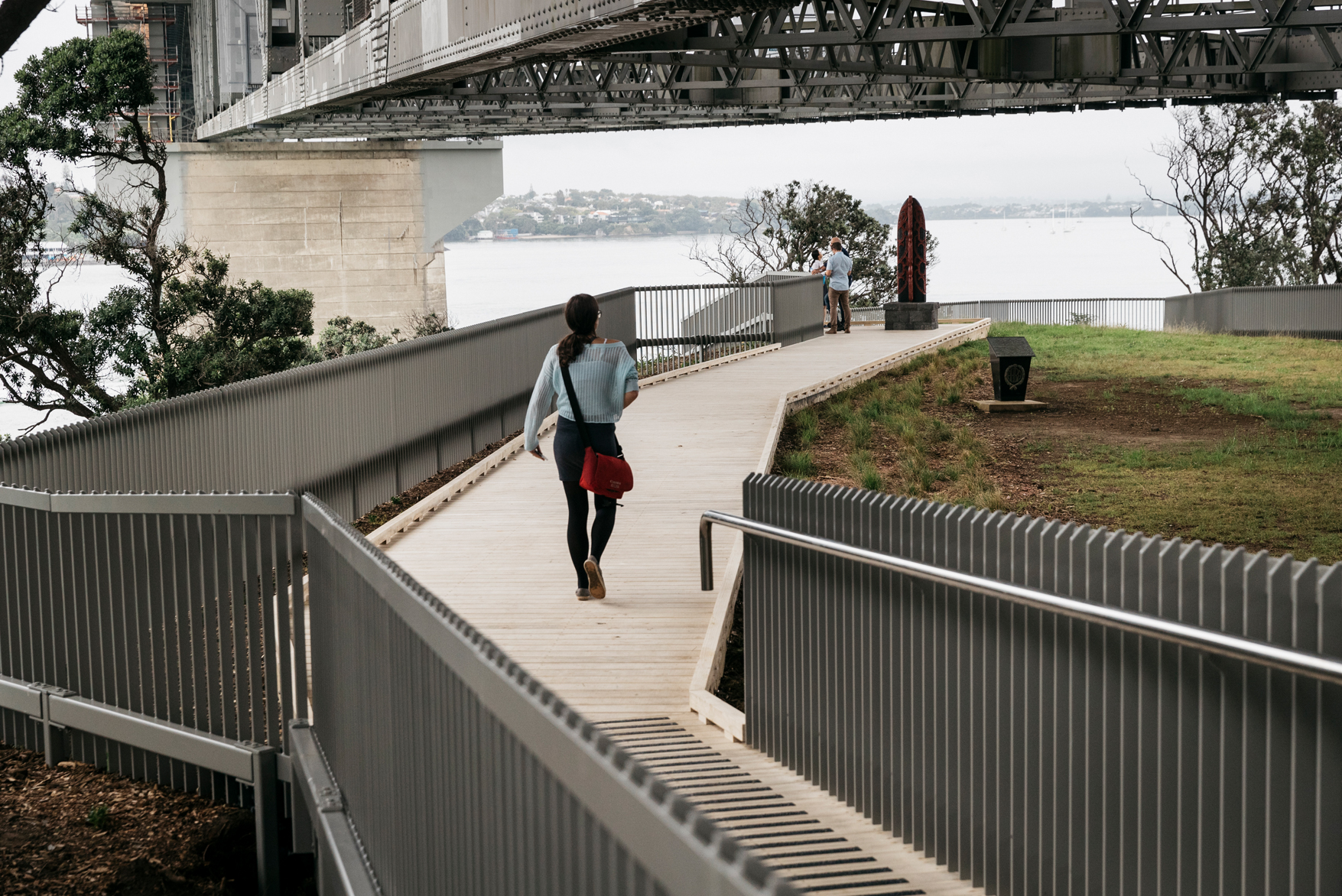Much of the site is extremely challenging. It is deprived of both light and rain due to the bridge overhead, so and the soil is very poor. Restrictions under the Heritage New Zealand Pouhere Taonga Act 2014 in relation to ground intrusion and overall site modification and sensitivity towards its significance to mana whenua required creative solutions from the design team and significant buy-in from NZTA.
Stage 1 included painting of the ‘The Trestle Leg Series’ (designed by Boffa Miskell with artist Catherine Griffiths) by where excerpts of poetry and prose were wrapped around eight of the eastern trestle legs of the west box girder beneath the Auckland Harbour Bridge.
Stage 2 of the landscaping was completed in 2013. This part of the project recognised natural and cultural landmarks of the area that were significantly altered when the bridge was constructed. One of the design elements was a vibrant red path to ‘greet your arrival at the bridge’ and ‘guide you into the reserve’; creating a visual and physical connection to the harbour and the reserve.
Stage 3 involved the construction of a pathway along the eastern side of the Northern abutment to provide all ability access for to Te Onewa, while accommodating the security and maintenance requirements for the Auckland Harbour Bridge. Extensive planting and new perimeter fencing was completed to facilitate this.
A raised timber walkway and platform minimise disturbance to the much-traumatised earth. A pedestrian bridge crosses the only remaining visible feature (defensive ditch) of the historical Pā site and sits above the ground, sparing it from further disturbance.
The new balustrade illustrates the level of care that stakeholders brought to the project. An old timber post-and-rail fence was removed, and each existing post hole was individually drilled out. The sub-grade was tested, and a new fence was designed around existing post-hole points.
Similar care was taken with planting installation and erosion control. No additional topsoil could be added to the historic site, so system of Ponga logs and biodegradable anchors were used to stabilise the slopes and provide protection for native plants. Incorporating new plants was essential to mitigate erosion on site, increase the visual amenity and heal the whenua. The fragility of the existing soil was exacerbated by the limited sunlight and rainfall, caused by the bridge overhead. A mix of native plants, including Rengarenga, Kowharawhara and Huruhuru Whenua were selected for their tolerance of these inhospitable conditions. These plants were arranged in evenly-spaced offset rows, acting as a korowai to protect the spiritual values of the landscape.
A pouwhenua carved from heart Totara by Reuben Kirkwood of Nga Tai ki Tamaki was revealed during the dawn blessing and recognises the whakapapa of mana whenua; and the memorial to workers who lost their lives during construction of the bridge remains nearby.





